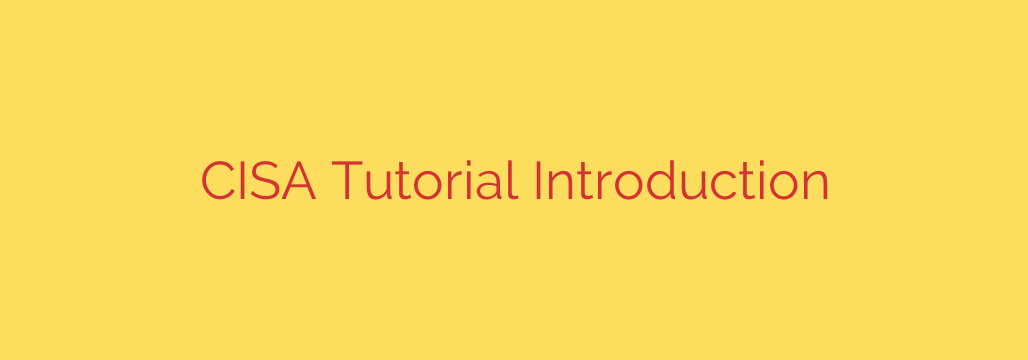
Understanding CISA: The Agency Guarding America’s Critical Infrastructure
In an age of constant digital threats, from sophisticated state-sponsored attacks to disruptive ransomware campaigns, the United States relies on a key federal agency to coordinate its national defense. This organization is the Cybersecurity and Infrastructure Security Agency, or CISA. While you may have heard its name in news reports, understanding its mission is crucial for anyone concerned with national security, business continuity, and personal digital safety.
CISA operates as the nation’s primary risk advisor, working across government and the private sector to defend against the threats of today while building a more secure and resilient foundation for the future.
What Exactly is CISA?
Established by the Cybersecurity and Infrastructure Security Agency Act of 2018, CISA is a standalone federal agency under the Department of Homeland Security. Its creation consolidated and elevated the mission to protect the nation’s essential systems from both digital and physical dangers.
CISA’s core mission is clear and vital: To lead the national effort to understand, manage, and reduce risk to our cyber and physical infrastructure. This isn’t just about government networks; it’s about the essential services that power our daily lives.
CISA’s Key Responsibilities
To achieve its mission, CISA focuses on several critical areas. Think of it as a central hub for analysis, coordination, and response.
Protecting Critical Infrastructure: CISA is the guardian of the 16 critical infrastructure sectors. These are the industries and systems considered so vital that their disruption would have a debilitating effect on security, national economic security, or public health. These sectors include Energy, Financial Services, Healthcare, Transportation Systems, and Water and Wastewater Systems. CISA works directly with owners and operators in these fields to identify vulnerabilities and improve their security posture.
Cybersecurity Information Sharing: One of CISA’s most important roles is acting as a national clearinghouse for cyber threat intelligence. The agency gathers information on new malware, attack techniques, and vulnerabilities from a wide range of sources, including federal partners, private companies, and international allies. It then analyzes this data and shares actionable intelligence and defensive measures with organizations across the country to help them protect their networks.
Federal Network Security: CISA is directly responsible for securing the federal civilian government’s networks (the “.gov” domain). By defending these high-value targets, CISA not only protects sensitive government data but also develops best practices and tools that can be shared with the broader public and private sectors.
Incident Response and Support: When a significant cyber incident occurs at a public or private organization, CISA is ready to assist. The agency can provide on-site support, technical analysis, and mitigation advice to help affected entities recover from an attack and prevent future occurrences. This collaborative response is essential for limiting the damage of major breaches.
Actionable Security Guidance for Everyone
CISA’s work isn’t just for large corporations or government agencies. The agency provides a wealth of free resources that businesses of all sizes, and even individuals, can use to improve their cybersecurity.
Taking proactive steps is the best defense against cyber threats. Here are some CISA-recommended security tips you can implement today:
- Embrace Multi-Factor Authentication (MFA): Go beyond a simple password. Activating MFA on your email, financial, and social media accounts is one of the most effective ways to prevent unauthorized access.
- Keep Software Updated: Cybercriminals often exploit known vulnerabilities in outdated software. Enable automatic updates on your operating systems and applications to ensure you have the latest security patches.
- Think Before You Click: Phishing remains a primary attack vector. Be skeptical of unsolicited emails, text messages, or links, especially those that create a sense of urgency or ask for personal information.
- Use Strong, Unique Passwords: Avoid using the same password across multiple accounts. Consider using a reputable password manager to generate and store complex passwords for you.
- Stay Informed: CISA regularly publishes alerts and advisories about current threats. Subscribing to these updates can give you early warnings about emerging campaigns and the steps needed to protect yourself.
In the complex and evolving landscape of global threats, CISA stands as a vital shield, working to unify the nation’s defenses. By understanding its role and utilizing the resources it provides, every organization and individual can contribute to a safer and more secure digital future.
Source: https://www.simplilearn.com/introduction-to-cisa-tutorial-video








